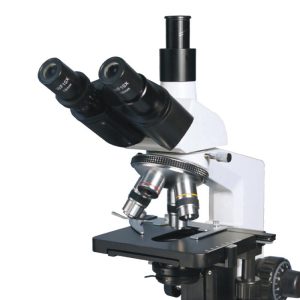Cylinder and eyepiece: the precise construction and function of the microscope
Mikroskopinin karmaşık dünyasında, the cylinder and eyepiece are difficult or absent elements that work together to enable us to observe tiny biological and material structures in depth. This article will introduce the functions and types of eyepiece and cylinder, and their role in the microscope.

Cylinder and eyepiece: the precise construction and function of the microscope
The function of eyepiece:
Mercek genellikle mikroskobun üst kısmında bulunur., and its role is to further enlarge the image after the objective lens is enlarged, so that the human eye can clearly observe the specimen. The eyepiece is divided into two working modes: monoküler ve dürbün.
Monocular eyepiece: Bu, göz mercekleriyle çalışmanın geleneksel bir yoludur, ancak artık nadiren kullanılıyor. It has only one lens and the observer observes the specimen with one eye.
Binocular goggles: Binocular goggles are the more common way of working. Alan aynası ve mercek adı verilen iki merceği vardır.. This design allows the observer to observe the specimen using both eyes, simulating the natural observation environment and reducing eye strain.
Modern eyepieces usually employ compound lenses to correct optical defects such as magnification chromatic aberration, coma, ve sapma. The design of the field mirror and eyepiece allows the observer to obtain high quality microscopic images.
Cylinder and eyepiece: the precise construction and function of the microscope
Type of mirror cylinder:
The cylinder is the bottom part of the microscope, genellikle objektif merceğe bağlanır, ve üç türe ayrılabilir: monoküler, dürbün, and trinary.
Monocular cylinder: This type of cylinder has become less used. It allows the observer to observe the specimen using only one eye and is less suitable for applications that require in-depth observation and recording of microscopic structures.
Binocular barrel: Binocular barrel is the common type. It allows both eyes to observe the specimen simultaneously, daha doğal ve rahat bir izleme deneyimi sağlamak. Tipik, binocular cartridges have adjustable pupil distance and telescopic range to accommodate different observers.
Trioküler tüp: Triocular tube is commonly used for photomicrography needs. It allows the observer to view the specimen using both eyes, while also having an additional optical channel that can be connected to a camera device to take high-quality micrographs and videos.
Cylinder and eyepiece: the precise construction and function of the microscope
The Importance of cylinder and eyepiece:
The cylinder and eyepiece are important parts of the microscope, and their design and quality directly affect the observation effect and comfort. Binocular cartridges and high-quality eyepieces allow the observer to view the specimen more easily, göz yorgunluğunu azaltmak, ve daha yüksek kalitede mikroskobik görüntüler elde edin. Aynı zamanda, the triocular tube facilitates microphotography, bilim adamlarının bulgularını kaydetmesine ve paylaşmasına izin vermek.
Özetle, the cylinder and eyepiece play a crucial role in microscopy, and their precise design and working mode provide a better viewing experience and high-quality microscopic observation results. These key components allow scientists to delve deeper into the microscopic world and reveal its mysteries. The mirror tube and the eyepiece together form the window of the microscopic world.
